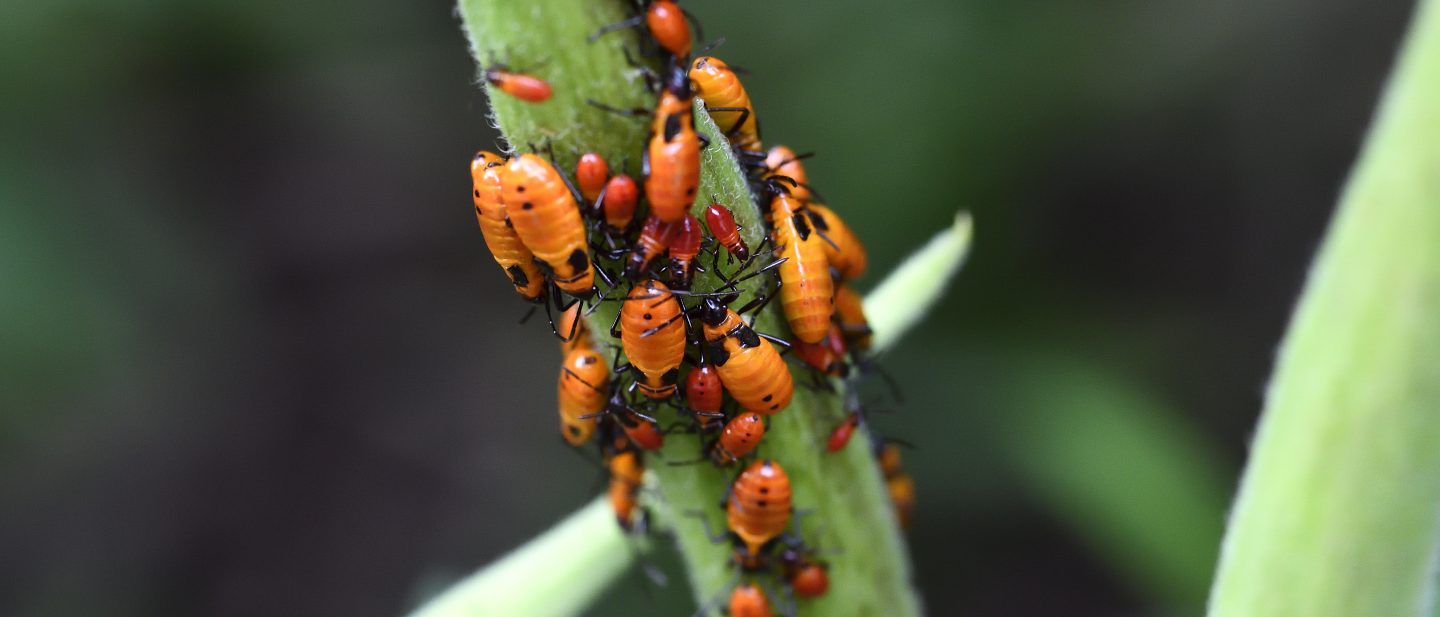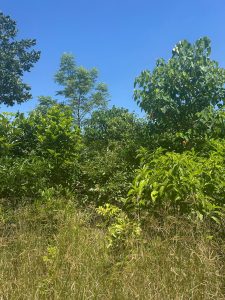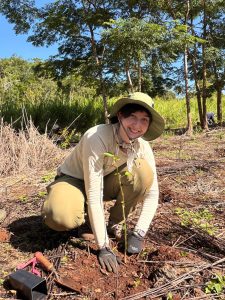
Olivia Bond is an undergraduate senior studying Environmental Science at the JHU Krieger School of Arts and Sciences. This spring semester, she is studying abroad in Australia at the School for International Training. Currently, Bond studies thermoregulatory behaviors of speculated flying foxes at James Cook University. Bond and her classmates wrote the following article to highlight the work from their class, “Rainforest, Reef, and Cultural Ecology Seminar,” with Tony Cummings and Dr. John Grant.
“The right tree, in the right place, for the right reason.” That is the motto of Trees for the Evelyn and Atherton Tablelands (TREAT), a community-based revegetation organization in the Wet Tropics region of Australia.
The Wet Tropics is a region on the east coast of Northern Australia that has a unique environment, home to vast biodiversity and ancient species lineages. Within the Wet Tropics, the Atherton Tablelands region is known for its rich basaltic soil and is home to a variety of flora and fauna. Much of the ancient rainforest has been cleared for agricultural use, which has led to forest fragmentation and a discontinuous habitat for many rare and endangered species. In recent years, there have been efforts to reforest the region to restore natural habitats.

TREAT is a prominent organization in the field of forest restoration that is advised by the Queensland Park and Wildlife Service. In 1982, Joan Wright and Geoff Tracey founded TREAT when they saw a need for a community-based organization focused on the restoration of rare and fragmented forests. Since the arrival of Europeans in the Wet Tropics, valuable species such as the Queensland Oak, Red Cedar, Northern Silky Oak, and many others have been harvested for timber. Deforestation increased in severity as Europeans began to clear land for monoculture farming. TREAT’s reforestation objective is to reestablish forested areas, create links between forest fragments, add habitats for many species, and develop a more stable environment for both the people and animals that live in them.
Reforestation is a long and complex process which requires careful planning and preparation. Once TREAT identifies a forest to restore the process of choosing a plot, deciding which species to plant, and harvesting and planting the seedlings begins. The cultivation of a diverse group of trees and their planting needs to be completed 18-24 months before the actual tree planting.
Between February 27–March 1, 2025, 18 students from the School for International Training based in Cairns, Australia traveled to a TREAT plot on the Atherton Tablelands to help prepare and plant over 2,000 Mabi forest trees. According to the Australian Department of Climate Change, Energy, the Environment, and Water, a Mabi forest is a complex notophyll forest with an uneven tree canopy between 25 meters and 45 meters tall with many tree layers. The name Mabi originates from the local aboriginal name for the Lumholtz’s tree kangaroo, a native species of the forest. As of right now, less than 2% of the original Mabi forest remains, and it is classified as critically endangered under the Environment Protection and Biodiversity Conservation Act of 1999.

As a part of the School for International Training, students collaborated with TREAT volunteers to plant trees in Wongabel State Park. The site was a roadside plot on about a half hectare of land adjacent to an established section of Mabi forest. TREAT did a major tree-planting project at that site a year earlier, but most of the saplings were killed by an unpredicted frost. Students arrived on the site on a sunny Thursday afternoon and were assigned jobs: boring holes with mechanical augers, adding fertilizer, and pouring water crystals to help the soil retain water. The following day, they visited the TREAT nursery where volunteers gather weekly to cultivate trees from seeds. Students assisted local volunteers with preparing seeds, planting seedlings, removing weeds, and washing pots for reuse. The nursery is home to 300,000 trees at any one time, and TREAT plants of those 80,000 every year.
On one Saturday morning there was the big event: putting trees in the soil. The students joined a group of around 75 volunteers to plant a total of 2,000 trees belonging to 85 different species. The majority of the seedlings planted were pioneer species. These species are crucial to the re-establishment of a forest because they are fast growing, mature very quickly, and attract native seed dispersers and pollinators that will spread primary canopy tree species. J. Grant, a long-time ecologist and Tablelands resident, believes that the greatest value in these plantings is that they “achieve a lot in the community.” When asked about forest conservation in his own community, Grant mentioned that a neighbor “cleared almost all of his property to build a house—two hectares [20,000 square meters], just gone.” Grant’s experience demonstrates that even private landowners can have a destructive impact on the local environment.

The land is shared with countless flora and fauna that have resided there long before humans. Impacts from deforestation are relevant, even on a small scale. Building community knowledge and involvement through organizations like TREAT is an important aspect to the further protection of threatened forests. While portions of the Wet Tropics are regulated by the government, private landowners must recognize the impact of their actions to preserve the region’s ecological value. Together, we can protect and preserve our rainforests.